9th October 2019
The 12-Step Model and Smart Recovery: Choosing Your Fellowship
For those dealing with addiction, recovery is a fundamental concept that you must explore, define for yourself, and strive towards for the rest of your life. One incredibly important tool for those attempting to conquer their addictions is peer support. Research has proven that “peer support groups included in addiction treatment show much promise in potentially reducing substance use, improving engagement, reducing HIV/HCV risk behaviors, and improving substance-related outcomes.”
We’re sure you’re familiar with the concept of 12-step groups. Along with other peer-support networks, they allow addicts to share their struggles, triumphs, and hard-won insights into the affliction they’re struggling with. It’s undeniable that the fellowship and community they create have saved countless lives. But alternatives to the 12-step model have been steadily gaining in popularity, and today we’ll take a stab at outlining the differences between SMART Recovery, one of the most proven alternatives, and the traditional 12-step model.
SMART Recovery and The 12 Steps: Divergent Philosophies
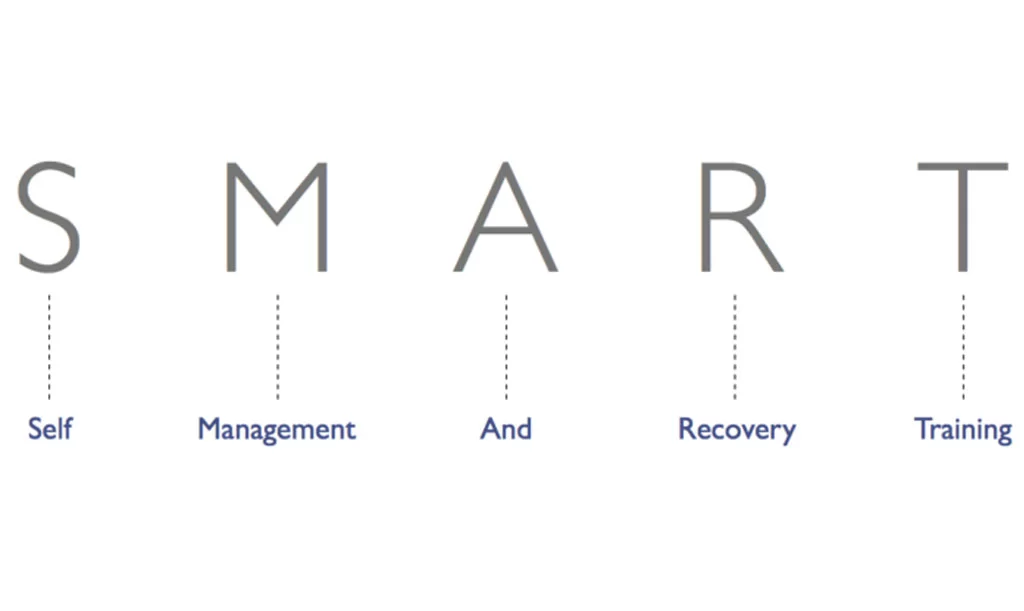
The basis for the 12 steps is spiritual, but not tied to any particular religion. As the Hazelden Betty Ford Clinic notes, there are four main stages to the steps: admitting powerlessness, opening up to a source of power outside of oneself, taking inventory, and maintaining/strengthening spirituality. The definition of spirituality is interpreted very broadly, and the group’s popular slogan “take what works and leave the rest” can allow newcomers and skeptical members to benefit from the aspects of the program that help them, and ignore the elements that they find unreasonable or forbidding.
SMART Recovery is based on a four-point program: enhance and maintain motivation to abstain, cope with urges, manage thoughts, feelings, and behaviors, and balance momentary and enduring satisfactions. Its basis is built on scientific, rather than spiritual, foundations, utilizing the principles of Dr. Albert Ellis’ Rational Emotive Behavior Therapy. Dr. Ellis is widely considered one of the originators of Cognitive Behavioral Therapy, and one of the most influential psychologists in history.
Perhaps the most fundamental difference between the two approaches is where the locus of control is placed. 12-Step programs emphasize the powerlessness of the individual in the face of addiction and call on those in recovery to find strength and motivation from an external, spiritual power. SMART Recovery, on the other hand, emphasizes internal control and encourages the individual to take control of their own thoughts and behaviors by turning negative thoughts and behaviors into positive ones. Also, while the 12-Step model is believed by its adherents to be universally applicable to all addicts, SMART Recovery allows much more flexibility, encouraging participants to create their own approach, one that suits their psychological profile, gender, age, emotional needs and duration and severity of their addiction.
The 12-Step Model and SMART Recovery: Differences in Practice
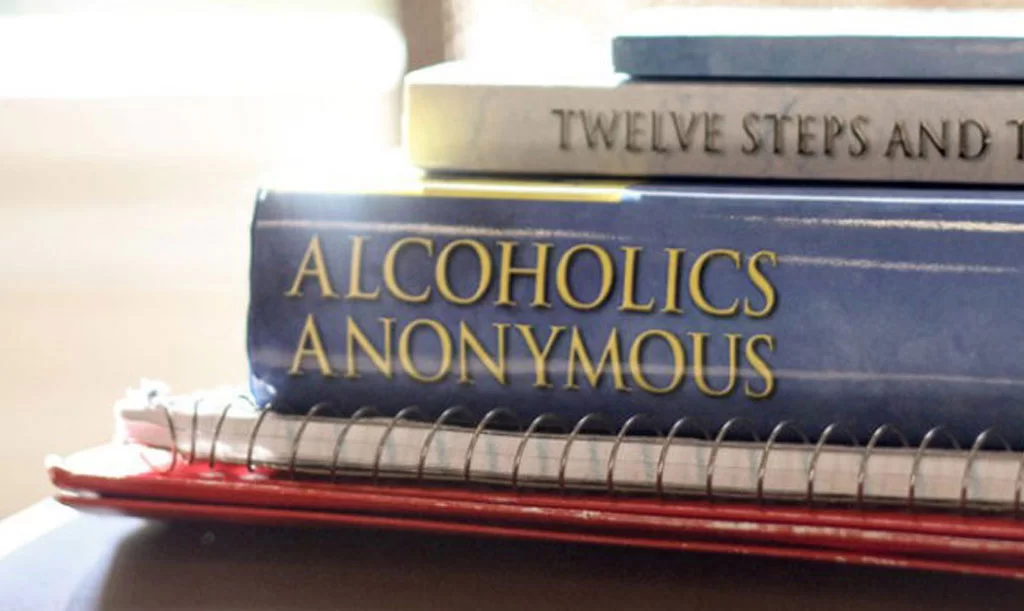
While AA and NA use the 12 Steps as a guide to one’s progression through the stages of recovery, SMART Recovery identifies six stages of change: pre-contemplation (subconsciously thinking of recovery), contemplation, determination/preparation, action, maintenance, and graduation. Graduation is a major difference between the two programs. SMART Recovery views addiction as a physical behavior, which ends when the addict stops using the substance they’re dependent on. Individuals can progress from “in recovery” to “recovered,” in contrast to the 12 Steps, where participants are encouraged to view themselves as alcoholics or addicts for the rest of their lives. Advocates of SMART Recovery feel that 12 Step programs perpetuate the stigma of addiction with the negative implication that addicts can never break free, while those in AA/NA would counter with stories of addicts who relapse after years or decades of sober living (people who had “too many years and not enough days”).
Another massive difference in practice is the idea of “cross-talk.” 12-step meetings are based on the idea of “sharing.” A participant will address the group with stories, struggles, or advice, but when sharing you aren’t allowed to discuss what another participant shared. In SMART Recovery meetings, cross-talk is allowed and even encouraged. Because many of the meetings are facilitated by professional therapists or counselors (unlike AA/NA meetings which are always facilitated by peers) there is often a qualified professional to keep things focused and productive.
One major advantage of 12-Step programs is the sponsor system. A sponsor is an experienced group member who develops a close relationship with a newcomer and guides them through the steps, embodying the 12th step of recovery: “Having had a spiritual awakening as a result of these steps, we tried to carry this message to alcoholics, and to practice these principles in all our affairs.” A sponsor should ideally take your phone calls when you need support, give advice on the difficult aspects of recovery, and develop an older sibling type of relationship with you. They can be life-savers as you grapple with the challenges of sober living, and are, in our opinion, one of the most valuable tools available to those in recovery.
A major advantage of SMART Recovery is its willingness to evolve as science improves our understanding of addiction. It’s currently based on 3 current scientific methodologies: Cognitive Behavioural Therapy, Motivational Enhancement Therapy, and Rational Emotive Behaviour Therapy. 12-step programs, on the other hand, are based on a text that debuted in 1939 and has remained virtually unchanged since then. One can safely assume that SMART Recovery is, therefore, better equipped to take advantage of neurological, pharmacological, and psychological research that will help us determine best practices for treating addiction, both now and in the future.
The 12-Step Model and Smart Recovery: Making Your Choice

Every brain is different, every addiction is different, and every recovery will be different. At Iboga Tree Healing House we would recommend that those in recovery explore every option that may help them build a healthy, balanced, sober life. We are proud of our weekly online meet-ups for individuals who have recovered with the help of Iboga, but we would recommend that you supplement them with an in-person gathering at least once a week as you move towards healing. See which meeting near you meets your needs, and find the people who can give you the support and friendship that will be a crucial support in your recovery. We bow before the wisdom of the precept “take what works and leave the rest.”
4th October 2019 • Sticky Post
What is Cognitive Behavioral Therapy?
When we picture psychotherapy or counseling, we often tend to conjure up a Freudian therapist in our mind’s eye. The patient lying on a leather couch and delving deep into their childhood memories and traumas. The psychiatrist asking in a sonorous baritone, “How did that make you feel?”. But for most patients, particularly those partaking in therapy as part of an addiction recovery program, the reality of addiction treatment is completely different from our preconceived notions. Today we’ll be taking a look at Cognitive Behavioral Therapy (CBT), and the benefits it can offer to individuals struggling with addiction.
The History Of CBT
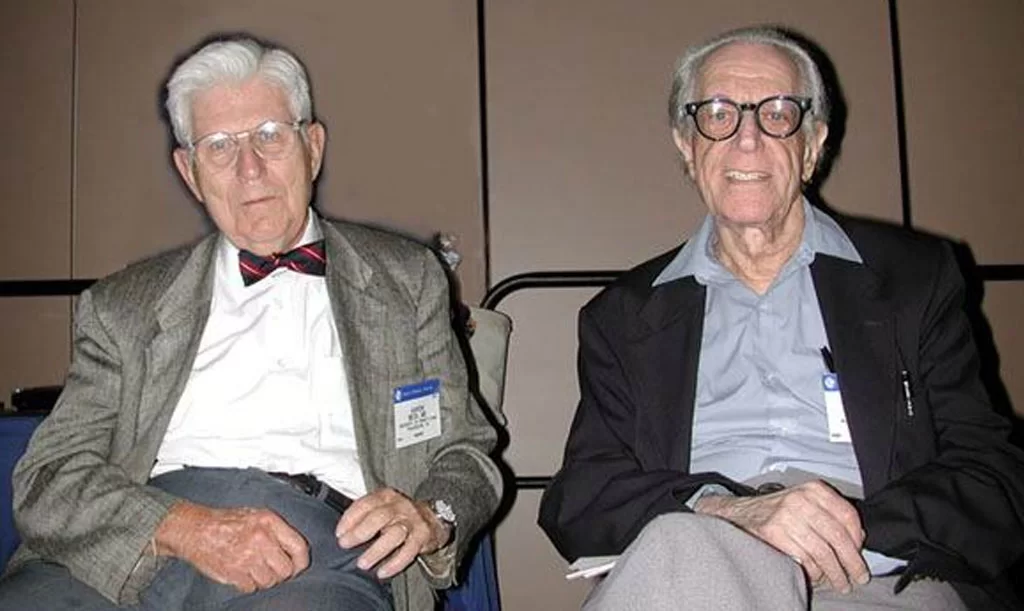
CBT has its roots in two intellectual traditions. The first, Stoicism, has been cited as an inspiration by two of the pioneering psychologists whose theories and findings led to the creation of modern CBT (Dr. Albert Ellis and Dr. Aaron Beck). A quote from the ancient Roman philosopher Epictetus sums up a core belief: “men are disturbed not by things, but the view they take of them,” meaning that the way in which we think (cognition) determines the way we react, feel, and behave.
The second intellectual tradition to inspire CBT was Behaviorism, a school popularized by Pavlov and Skinner. The behaviorists would claim that behavior could be learned or unlearned depending on the consequences associated with it and that the best method of intervening with psychological problems was to focus on shaping healthier behavioral patterns.
In the 1960s Drs. Ellis (Rational Emotive Behavior Therapy or REBT) and Beck (Cognitive Therapy or CT) developed therapeutic approaches that would gain popularity throughout the coming decades. Both psychologists “emphasized the role of cognitions or beliefs as underlying emotional and behavioral disturbance”, and a movement was born. By the 1990s, elements of each system had been woven together by therapy practitioners under the umbrella of cognitive behavioral therapy.
How Cognitive Behavioral Therapy Works
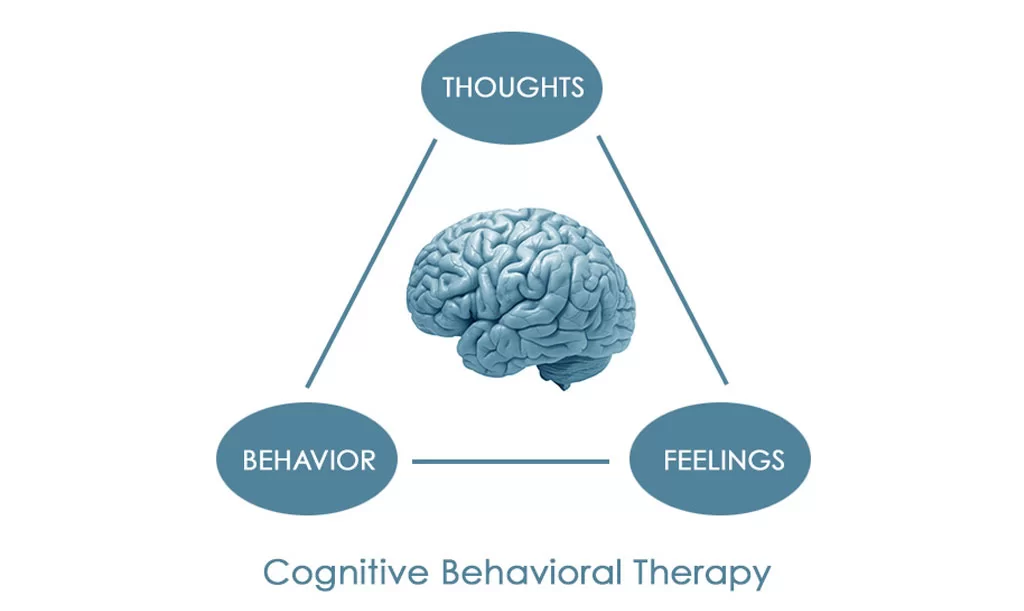
One of the first steps in cognitive behavioral therapy, according to the NHS, is to “help you deal with overwhelming problems in a more positive way by breaking them down into smaller parts.” A cognitive behavioral therapy practitioner will try to guide you through the process of changing negative patterns in both thought and behavior to improve the way you feel. Rather than focusing on painful memories or past traumas, cognitive behavioral therapy aims to deal with your current problems and behaviors on a daily basis.
Most patients who partake in cognitive behavioral therapy will have a treatment session lasting from 30-60 minutes once every week or two. The NHS recommends 5-20 sessions during the course of treatment, depending on the severity of your problems. During treatment, your therapist will work with you to isolate the components of your psychological or physical issue, separating thoughts, physical feelings, and actions. Your therapist will then work with you to determine the interactions between these separate parts of your issue, and try to distinguish between thoughts and behaviors that are realistic and helpful and those that are not.
At this point, you and your therapist will work to begin the process of changing negative or harmful thoughts and behaviors. The aim of the therapist is to provide you with skills that you can use to manage problematic thoughts and behaviors in real-life. After therapy concludes, you should have the ability to manage your issues and stop them from having substantial negative impacts.
Cognitive Behavioral Therapy and Addiction
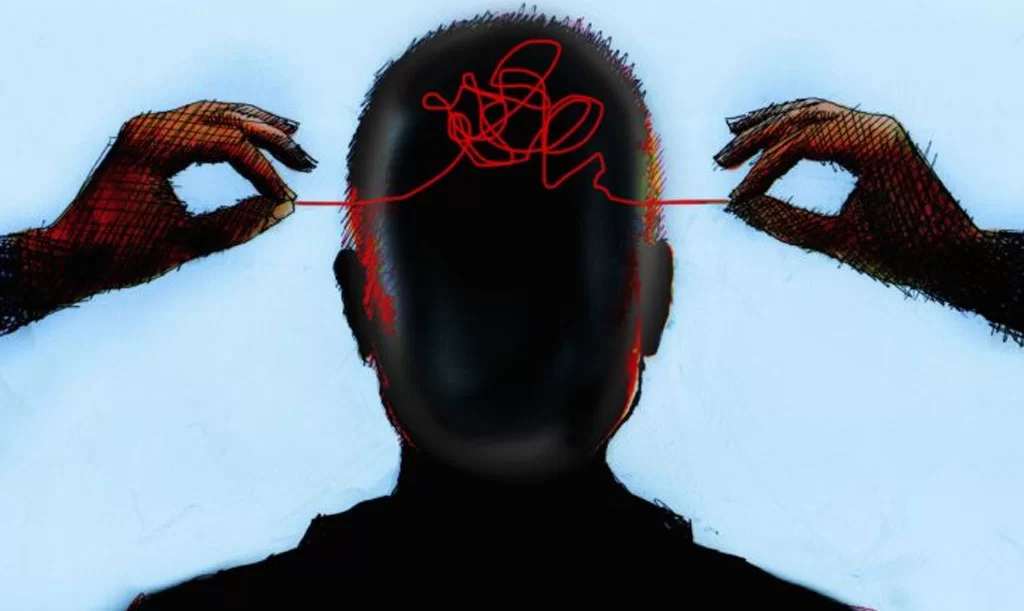
Addiction in itself is a negative and self-destructive form of behavior. It is self-reinforcing, creates anxiety and depression, and leads the addict to the self-defeating conclusion that they cannot function without the substance that they habitually use. Cognitive behavioral therapy helps those in recovery to break free from these harmful patterns of thought and action. It breaks down the seemingly insurmountable affliction into individual parts and offers skills and strategies for dealing with them in positive ways.
Cognitive behavioral therapyoffers addicts tools for assessing the accuracy and reliability of their thoughts. Practically, this is an excellent way to build your ability to resist cravings. Sometimes, asking yourself if a drink or drug is actually the best way to deal with a trigger or stressful situation is all it takes to avoid using. Similarly, as you develop mental skills for handling triggers, you can become confident in your ability to deal with cravings and bouts of anxiety, rather than attempting to make them go away with substance use. Cognitive behavioral therapy employs “habituation”, the idea that experiencing difficult feelings and situations without compensating (having a drink or using a drug) or fleeing can teach you that your anxieties are manageable and will become less intense over time.
Cognitive behavioral therapy also helps you to explore your emotions. Through it, you can come to terms with the way you’re feeling, and how those feelings impact thoughts and actions. Knowing that you’re scared, angry or sad can help you to recognize that the thoughts currently running through your mind should be handled with care, and not immediately acted upon. A key facet of cognitive behavioral therapy is “emotional regulation,” a concept defined by some practitioners as “ 1) the ability to shift attention away from the things that are likely to kick up intense negative emotions, such as sadness, anger, shame, and anxiety; 2) the ability to inhibit acting on an emotion when desired; and 3) the ability to decrease the intensity of emotions without drugs and alcohol.” This skill is exceptionally helpful for individuals in recovery!
Following detox and withdrawal, we would strongly recommend that you explore Cognitive behavioral therapy as a way to build the skills you need on the journey to recovery. One way to take advantage of what it can offer is to try out SMART Recovery programs, based on the REBT methodology. Along with evidence-backed holistic practices such as mindfulness and meditation, Cognitive behavioral therapy is a way to get in touch with your true self and learn to manage the stresses and trials of sober living. If you’re interested in putting these principles to work, get in touch with Iboga Tree Healing House today!
26th September 2019 • Sticky Post
Iboga Therapy and Why It Works
A burgeoning movement is underway, pushing the benefits that so-called “plant teachers” like iboga, ayahuasca, and psilocybin can offer individuals suffering from ailments ranging from addiction to depression, PTSD, and anxiety into the mainstream. As these remarkable substances have come to the attention of notable thinkers and writers such as Tim Ferriss, Michael Pollan, and Dr. Gabor Mate, it seems like they are about to burst into the popular consciousness and finally be recognized as the powerful medicines they are, escaping the stigma of the “drug” label they’ve borne for decades. As society begins to recognize the immense potential of these plants to induce positive change, let’s take a look at how iboga treatment has helped transform thousands of lives.
Iboga Therapy For Addiction
We’ve written before about exactly how iboga therapy works for those battling addiction. Iboga therapy is particularly effective in treating opiates and opioids because it acts as an opioid antagonist. This means that the substance creates molecules which bind with opioid receptors in the central nervous system, and interact with serotonin and dopamine receptors in the brain. This causes a pronounced reduction in withdrawal symptoms and disrupts cravings for this family of drugs. It also is believed to return addicts to a “pre-addicted state,” meaning that Iboga can return your tolerance to novice user levels, and offer you a 3-6 month window where you probably won’t have a desire to use or abuse opiates or opioids.
Iboga therapy has also proved beneficial in treating a variety of other addictive behaviors. Studies have shown that iboga can similarly reduce cravings for alcohol and stimulants such as cocaine and amphetamines. It also offers the benefit of opening the addicted mind to the possibility of a dramatic lifestyle change, and offering renewed connections to one’s community and one’s true self. The aforementioned Dr. Mate recommends substances like ayahuasca and iboga for their unique abilities to help the addicted acknowledge and come to terms with past traumas that have led them into the addicted state. He notes that once we learn to cope with our psychic wounds, “we are free to connect with others without fear and reclaim the community for which addiction served as a substitution.”
While we would urge caution on those promoting iboga therapy as a miracle cure for drug addiction, we have seen first-hand what it can do. Iboga acts as an “addiction interrupter,” which frees the addict from debilitating withdrawal symptoms and cravings, and allows them a window of time to work on transforming their self-destructive thoughts and behaviors into healthy and positive patterns. Iboga isn’t a magic bullet that will destroy your addiction, but it can give you time to begin a sober life, and build the skills, support network, self-discipline, and habits that will enable you to live your best life!
Iboga therapy For Trauma and Other Psychological Disorders
In addition to its utility in fighting addiction, iboga has proven itself to be a valuable tool in treating PTSD and other psychological disorders. According to Dr. C.M. Anderson of the Harvard Medical School, “Iboga works through multiple neurotransmitter systems to create.. (a) state of plasticity similar to states of plasticity existing during fetal development. This critical brain state may facilitate the consolidation of traumatic memories, reversal of abnormal hemispheric functions, and the dissolution of habitual motor patterns associated with addiction.” In other words, the substance creates conditions in the brain which are ideal for working through the psychic pain at the root of many psychological disorders.
An iboga experience often involves a vivid and intense period of re-experiencing one’s past, followed by several hours of introspection and reflection. Many of those who’ve experienced iboga therapy find that confronting and acknowledging past trauma allows them to address the scars which have led to depression, anxiety, and trauma. Large numbers of patients who’ve undergone iboga therpay have noted that facing their demons has let them feel powerful enough to acknowledge and live with their pain, and that this realization has been a profoundly freeing experience. One user credits a visionary experience with leading him to the realization “that every emotion is as valid as any other… it was okay to have negative thoughts. That’s life. For me, trying to resist emotions just amplified them. Once I was in this state, it was beautiful—a feeling of deep contentment.”
Researchers have found that many sufferers of depression describe their affliction as first and foremost “a state of disconnection,” whether from other people, their earlier selves, their senses and feelings, their core beliefs and spiritual values, or nature. Iboga and other oneirogenics and psychedelics have demonstrated the ability to reconnect these patients to the world around them. Many liken their experiences with these remarkable plants to breaking out of a prison in which they’d been trapped.
Changing Lives and Opening Minds
Psychological disorders and addiction can both engender a sense of hopelessness. All of these afflictions create a mental atmosphere in which the idea of recovery or change appears impossible. One of the greatest benefits that iboga therapy offers is a ray of hope. Plant teachers can shake up chronically negative thought patterns, and allow the patient to see themselves in a new light: as an individual with the power to enact dramatic change in their own life. As Dr. Mate writes of Ayahuasca, “The documented unity of mind and body means that… experiential transformation… can powerfully affect the hormonal apparatus, the nervous and immune systems, and all organs such as the brain, the gut, and the heart. Hence the healing potential of the plant, seen through the lens of Western science.”
If you’re interested in experiencing the healing potential of Iboga therapy, don’t hesitate to get in touch with Iboga Tree Healing House today!
18th September 2019 • Sticky Post
10 Ways to Overcome Addiction
It’s not easy to overcome addiction. For those afflicted, it can be almost impossible to visualize. At times it will seem incredibly difficult to accomplish. But you can do it. You probably became addicted because of pain or trauma. It may be that a chemical imbalance or genetic predisposition was a factor. You might have stumbled into dependence on powerful prescription painkillers. But in order to beat your addiction, one of the first steps you must take is coming to terms with its root causes.
Almost no one conquers addiction alone. The first step you should take is finding health-care professionals you trust, who take an approach that meets your individual needs. There isn’t one formula that works for everyone, and you’ll find a wide variety of approaches and strategies for creating and maintaining sobriety. Before choosing a treatment provider, you should determine what therapies and circumstances you think will work for you. With that in mind, let’s examine the steps on your path towards a healthy, addiction-free life.
1) Therapy and Counseling


Individual therapy is highly effective because it allows addicts to examine their unique traumas and triggers. The wonderful feature of group therapy is that it allows sharing and fellowship between recovering addicts who benefit greatly from friendship and support, and it lets participants share strategies and insights on their affliction. Most comprehensive treatment programs will offer patients a mixture of group and individual therapy, and both have been clinically proven to dramatically improve outcomes.
2) Support Groups

These programs are immensely valuable because they allow former addicts to guide those struggling with addiction through the recovery journey. They also allow those rebuilding their lives access to a wide network of peers who can offer support and friendship at a time when it might be unwise to spend time with problematic friends and family members. There’s no teacher like experience, and the advice of those who’ve gone through the harrowing experience of addiction and come out the other side is immeasurably useful. While the “Anonymous” family of groups put a religious slant on peer support, other options like SMART Recovery and Iboga Tree Healing House’s online aftercare program may fit better with your experiences and values.
3) Detox and Clinical Therapy
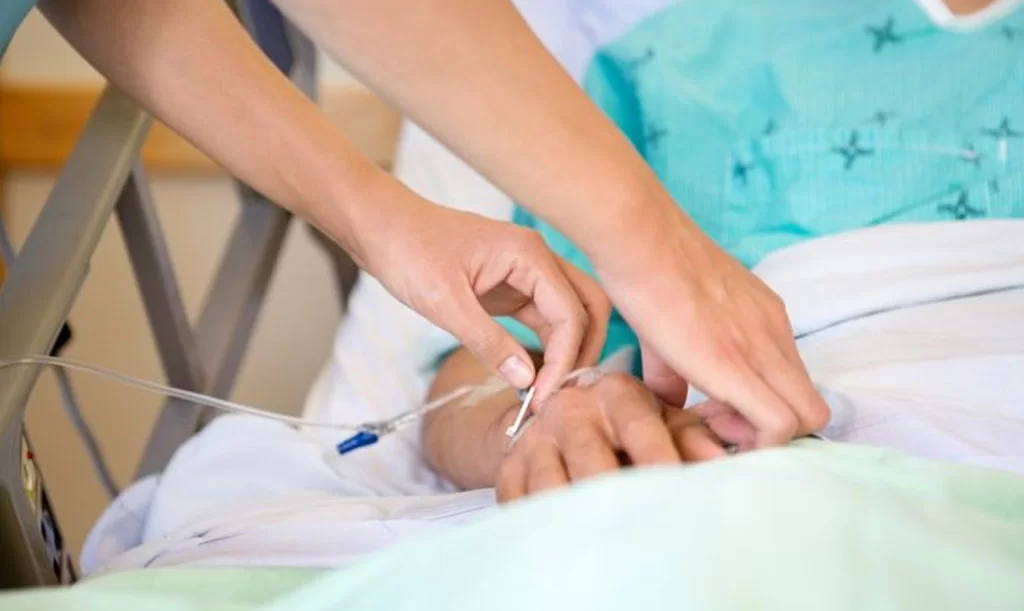
Detoxification can be a horrific ordeal with substances like opioids or heroin, but it doesn’t have to be. Finding the right treatment to get you through this phase of recovery can remove one of the biggest obstacles standing between your addicted self and a new life. Medical supervision and anti-craving drugs can help you through, getting all traces of methamphetamine, benzos, or whatever substance you’re dependent on out of your system, so you can focus on dealing with the behavioral and psychological aspects of rebuilding yourself.
4) Alternative Detox Options
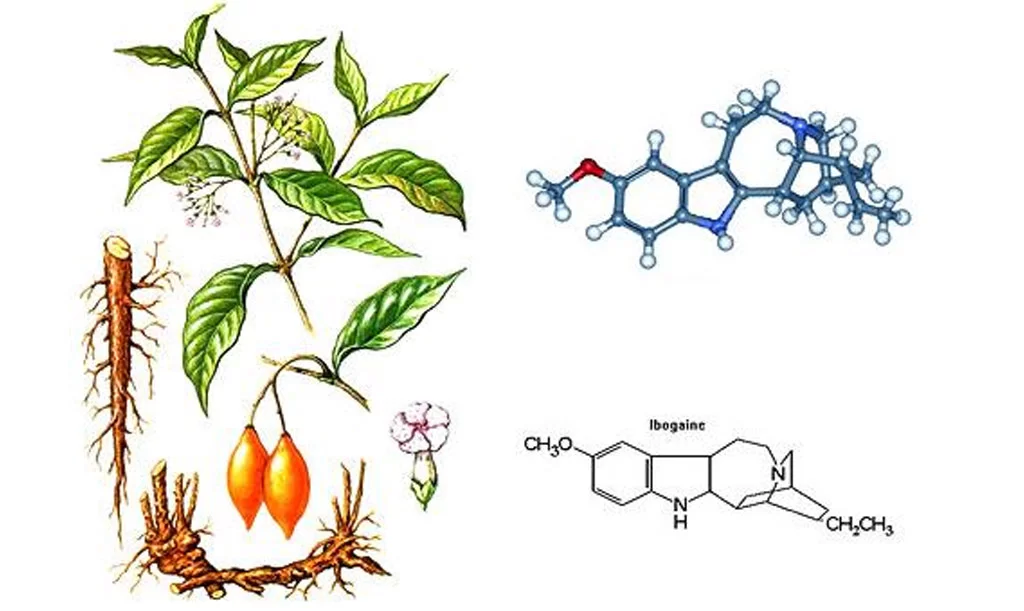
A number of powerful psychedelic and entheogenic substances have shown immense promise in treating addiction and deserve to be considered by those entering treatment. Many addictions experts, like Dr. Gabor Mate, have embraced treatments which allow the addicted to explore the roots of trauma and learn to live with themselves. Iboga has been shown to offer the same benefits in terms of exploring past trauma, as well as re-wiring key neural functions to a pre-addicted state. Iboga has also been proven to dramatically reduce withdrawal symptoms for opiate and opioid addiction, and to reduce cravings for a period of approximately 6 months. Other psychoactive substances that have shown promise in treating addiction, including psilocybin and MDMA, have helped some addicts through their recovery, but at this stage, the evidence supporting their use is mostly anecdotal.
5) Dual Diagnosis
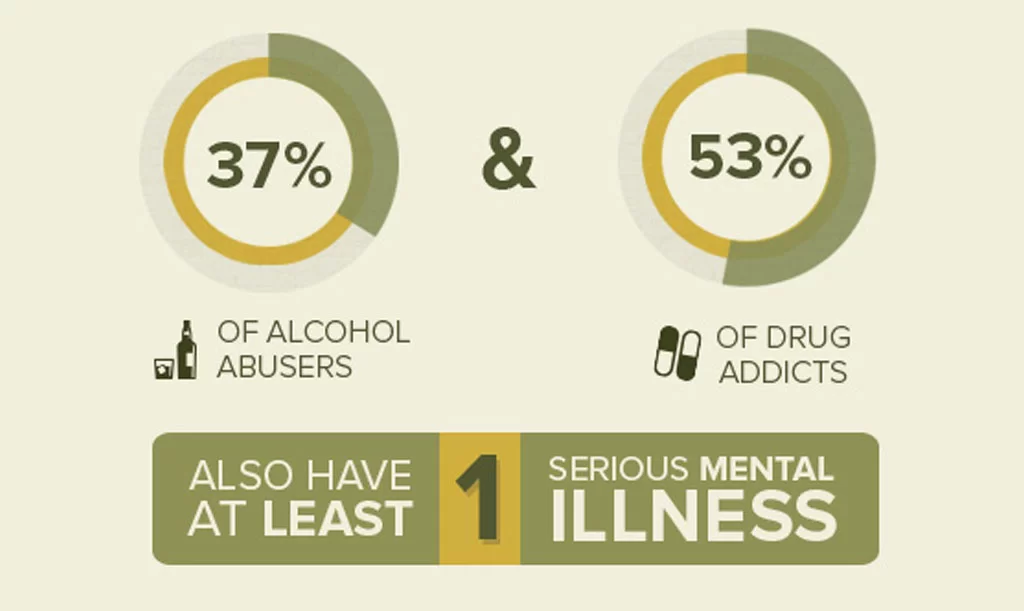
When patients have a condition that leads to or exacerbates addiction, such as a mental health disorder, addiction treatment becomes more complex. Not every treatment center is equipped to provide integrated treatment that addresses both afflictions at once. If you suffer from dual diagnosis, it’s imperative that you find treatment centers and professionals who are capable of providing simultaneous treatments for both of your disorders. Some treatments which may be effective for one of your conditions might worsen the other. You need to find responsible and experienced practitioners who can find the right treatment options for you.
6) Family Involvement

Addiction often has its roots in family dynamics. If your parents are alcoholics or addicts, you are far more likely than the average person to share their addiction. There is no consensus among treatment providers on how best to deal with familial issues. Some centers opt to seclude the addict to work on themselves without possibly toxic interactions. Others include the family, in order to correct the issues that could harm their loved one’s recovery while leveraging their love and support. We would recommend involving families in treatment, as studies have shown family support can predict positive outcomes, but some may benefit in their effort to overcome addiction without subjecting themselves to negative or toxic relatives.
7) Treatment Centers

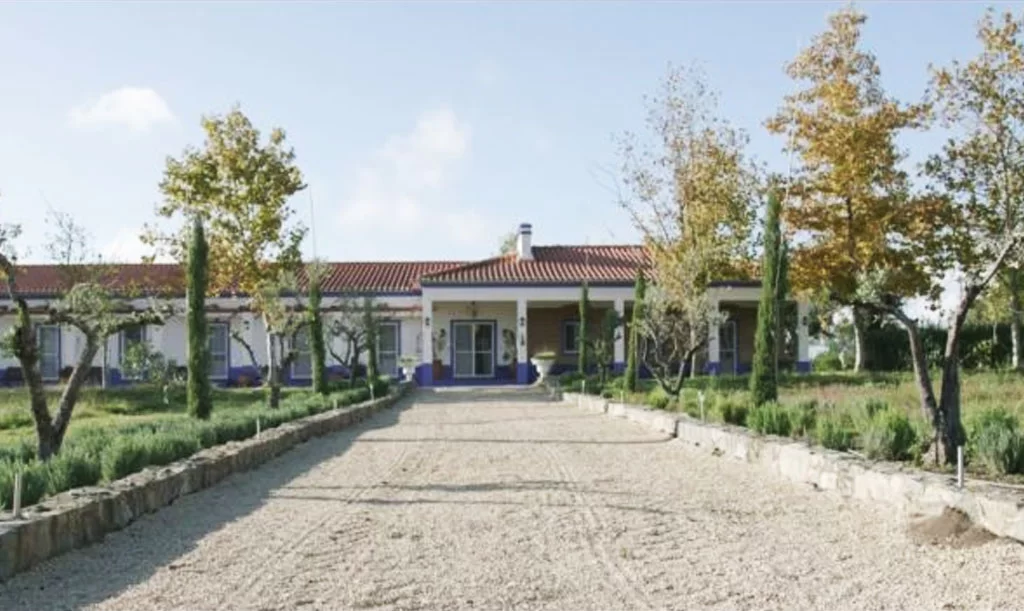
Inpatient and outpatient treatments each come with a set of benefits and drawbacks, it’s up to you to determine which will give you the greatest chance to overcome addiction. Inpatient treatment offers supervised detox, and the opportunity to undergo an intensive program of individual and group therapy. It can also offer a luxury experience which allows the user to relax and recover in an idyllic setting. On the other hand, outpatient treatment can allow those in recovery to attend daily meetings and have their withdrawal and recovery monitored by a caregiver. Outpatient treatment allows recovering addicts to receive therapy without putting their lives on hold for 30-90 days and lets them adjust to their sober lives incrementally.
8) Aftercare
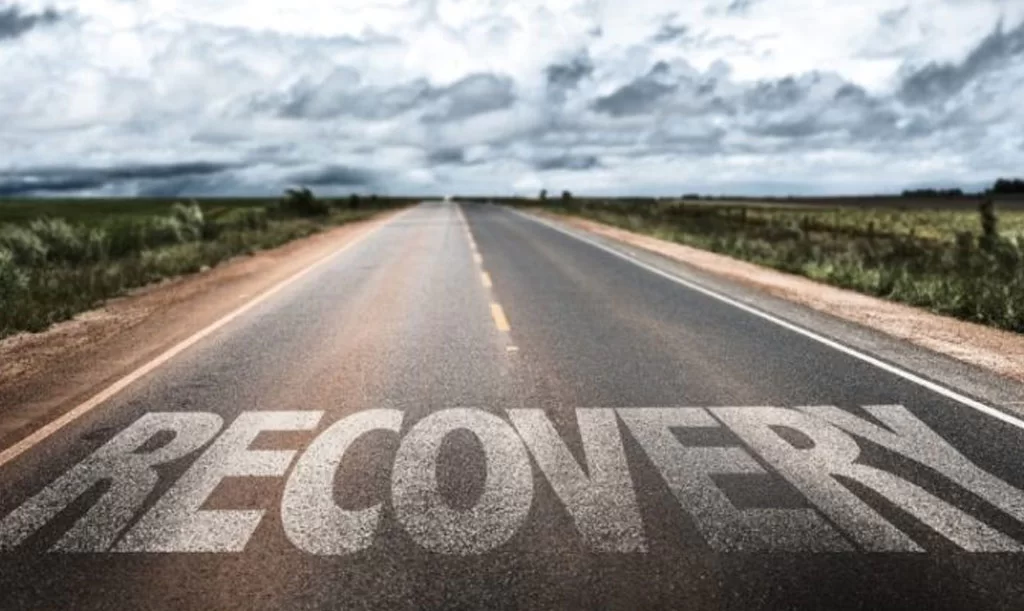
Aftercare is an essential component of any effort to overcome addiction. When you finish treatment, your recovery journey has just begun. It’s time to develop strategies for fighting off craving and dealing with triggers. Peer support groups are highly recommended, as are holistic therapies such as mindfulness training, yoga, and breathwork. Cognitive-behavioral therapy (CBT) is a treatment that has helped many addicts break free from negative automatic thinking and deal with their cravings in a positive manner.
Another essential component of aftercare is building the foundation for a healthy life. It can be helpful to start by outlining your value system, with a focus on honesty, trust, and forgiveness. Addiction has taken you far away from your best self, and outlining and committing to values you may have abandoned will help you rebuild connections with your community, your family, and yourself. It can also be very helpful to build a reward system for accomplishing goals both large and small. You have the opportunity to enjoy a world of things and places at this stage of recovery, and rewarding yourself with something as small as an ice cream or as big as an international vacation can return positive motivation to your life.
9) Connecting

Virtually nobody can overcome addiction alone. One of the most beautiful parts of the recovery journey is finding support from the people around you as you reclaim your life. As we’ve already mentioned, peer-based support groups and re-building family connections can greatly improve your chances for success. As you go through treatment, remember that the therapists, peers, psychologists, sponsors, and caretakers you encounter are an invaluable resource. Take advantage of their experience, and the love and support offered by family members and true friends. And before you choose a treatment provider, make sure that they can offer you the resources you’ll need after discharge!
10) Set Your Goals
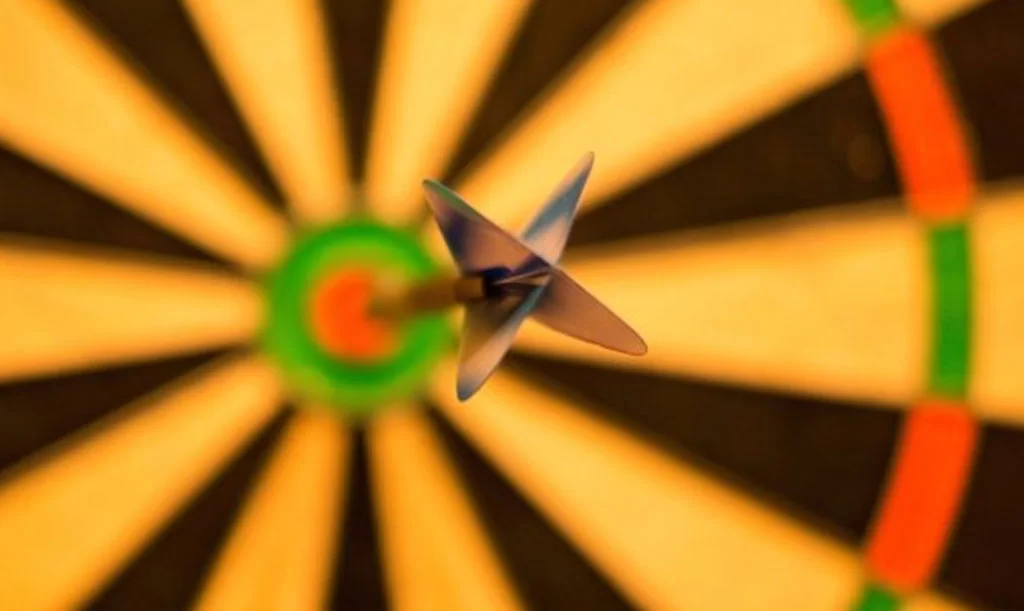
It’s easy to say you’re ready to overcome addiction, but triumphing over it is the work of a lifetime. And the decision to break free is yours and yours alone. It begins with admitting to yourself that a substance or behavior has taken over your life and that it’s time to regain control. It’s helpful to start by reflecting honestly on all the harmful effects your addiction has had on you and your loved ones. Think about all of the changes addiction has made in you, and reflect on the person you were, the person you’ve become, and the person you’d like to be in the future. It won’t be easy to become that person, but at Iboga Tree Healing House we have seen our clients emerge from the wreckage of addiction and build happy and productive lives. If you’re ready, contact us today!
10th September 2019 • Sticky Post
Ayahuasca and Iboga: Choosing Your Treatment Path
Iboga and Ayahuasca have both shown tremendous promise in treating addiction, as well as a variety of other psychological ailments. Both plants have helped countless individuals experience healing, recovery, spiritual development, and personal growth. But although they are often lumped together, they offer fundamentally different experiences and benefits for those battling addiction. Today we’ll share our guide for choosing the right treatment for you.
The Journey
The average Iboga experience lasts for a period of 12-18 hours. It is generally described as a very intense journey through past memories and visions. Very few people who have used Ibogaine would describe their experience as pleasurable. Many liken it to having themselves shattered into thousands of pieces and then rebuilt as a stronger, healthier person. As one user describes it “I am perplexed by the state of clarity I am in while seeing the most profound stream of visual phenomena. I am also filled with a sense of awe at the potential for a life free of heroin. Emotional memories force me to deal with some of the deep subconscious guilt I have repressed for years.” Iboga has been described as a “masculine” substance, or a stern father which bluntly illustrates sources of past pain, trauma, and guilt.
Ayahuasca, on the other hand, affects the user for just 4-6 hours. It is generally described as a gentler, more pleasurable experience, even when one takes into account the fact that many users experience a dramatic bout of purging. Rather than prompting users to have a deeply personal inward journey, Ayahuasca often sends the mind outward, and many users report experiencing new perceptions of reality and experiencing connections with the natural world and even other dimensions. Ayahuasca has therefore been described as a “feminine” substance which builds connections between the user and those around them.
What Are The Benefits?

Many addicts have used these remarkable plants to overcome their affliction, but governments have been reluctant to embrace their potential to combat addiction. There is a lot more anecdotal evidence out there than there are clinical studies, but the chorus of thousands of voices shouldn’t be ignored. Both Iboga and Ayahuasca are clearly beneficial for those battling substance dependencies.
From the studies of Iboga that have been conducted, we know that it interacts with addiction in a few ways. The patient can experience visions and periods of profound introspection. Many users claim that this experience allows them to address traumatic experiences in their past, and pushes them to explore and understand their addiction while motivating them to pursue changes in their life.
Iboga also releases small proteins in the brain called “neurotrophic factors.” These proteins, according to Dr. Ignacio Carrera, “are substances that promote survival, repair and protection processes in the brain tissue.” They can change the brain’s circuitry and have been shown to restore dopamine levels and other crucial brain functions to “pre-addicted” levels. They also dramatically lessen the symptoms of withdrawal for opioids and opiates, and cravings for substances in general.
Ayahuasca, on the other hand, is generally viewed as a way to improve mood, make patients receptive to change, and deal with their emotional wounds. The influential Canadian Dr. Gabor Mate recommends Ayahuasca as an addiction treatment, noting that it can re-connect the addicted to ”inner qualities long been missing in action, such as wholeness, trust, love and a sense of possibility. People quite literally remember themselves”.A recent Psychology Today article lists the benefits of Ayahuasca as helping individuals overcome roadblocks, find personal and spiritual motivation, and acting as “a shortcut to talking therapy.”
What Are The Risks?
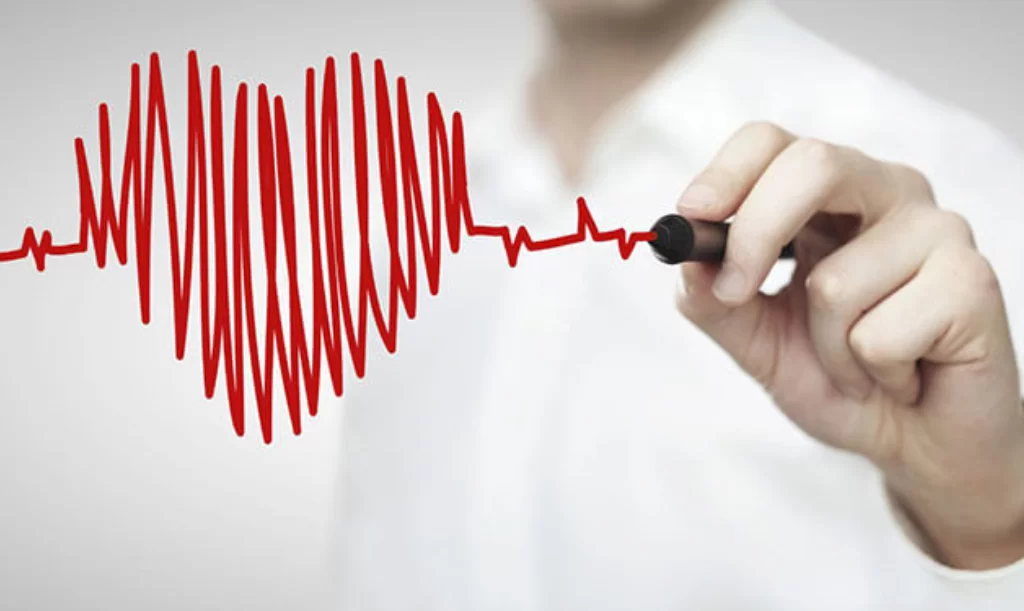
Iboga use is not without risks. There have been fatalities associated with its use, the majority of which have been related to adverse interactions with drugs already in the system of those undergoing treatment, or pre-existing heart conditions. In high doses, Iboga can also cause seizures. At Iboga Tree Healing House, we believe that every Iboga-related death was preventable, but we feel any responsible provider will subject patients to a rigorous screening process and have a detailed plan in place to respond to medical emergencies. We DO NOT recommend self-administration or choosing a treatment center that doesn’t perform blood, heart, and toxicology tests to ensure that your safety isn’t subjected to needless risks.
Ayahuasca has also been associated with fatalities. It should also be avoided if you suffer from certain heart conditions, have other substances in your system (including nicotine) or suffer from some mental illnesses. In high doses, it may increase the risk of seizures and respiratory distress, and a potentially fatal condition called “serotonin syndrome,” where extremely high levels of serotonin cause dizziness, disorientation, headache, high blood pressure, and agitation.
Continuing The Journey

Ayahuasca has shown great potential for increasing the receptivity of patients to treatment, counseling and taking on the challenge of making major changes in behavior and lifestyle. Both treatments have the ability to profoundly alter relationships between addicts and the substances they’ve become dependent on, and re-connect individuals with their true selves. But Iboga has the added benefit of dramatically reducing the symptoms of withdrawal for opiate and opioid users, as well as its effects on the central nervous system which repair and re-set the brain to its pre-addicted state.
Both of these plant teachers can be extremely beneficial to those suffering from addiction, and this is borne out by studies showing that 60-80% of Iboga users are classified are abstinent 6 months after receiving iboga addiction treatment. However, neither should be termed a “miracle cure,” and prospective patients should be wary of centers touting either substance as a sure-fire remedy for addiction. The road to recovery is long and winding, but both of these powerful natural medicines can help you on your way.
5th September 2019 • Sticky Post
Iboga Therapy: Here's What We've Learned
Back in January of this year, experienced iboga aficionado and Global Ibogaine Therapy Alliance Executive Director Jeremy Weate sat down with Third Wave to discuss important lessons learned during the opening of our premiere ibogaine treatment facility in Portugal.
Having experienced the realities of providing Iboga treatment to persons in varied states of physical/mental health, and knowing the dangers inherent in our chosen field, we felt, it was worth recounting the hard-won lessons we’ve learned for all those who might follow in our footsteps.
That’s why we’ve decided to revisit 7 of the most important lessons we’ve learned with Iboga Tree Healing House Founder Alvaro De Ferranti to delve a little bit deeper into what administering iboga to dozens of clients has taught us thus far, and how we have learned to address each issue to minimize the risk.
1) Safety
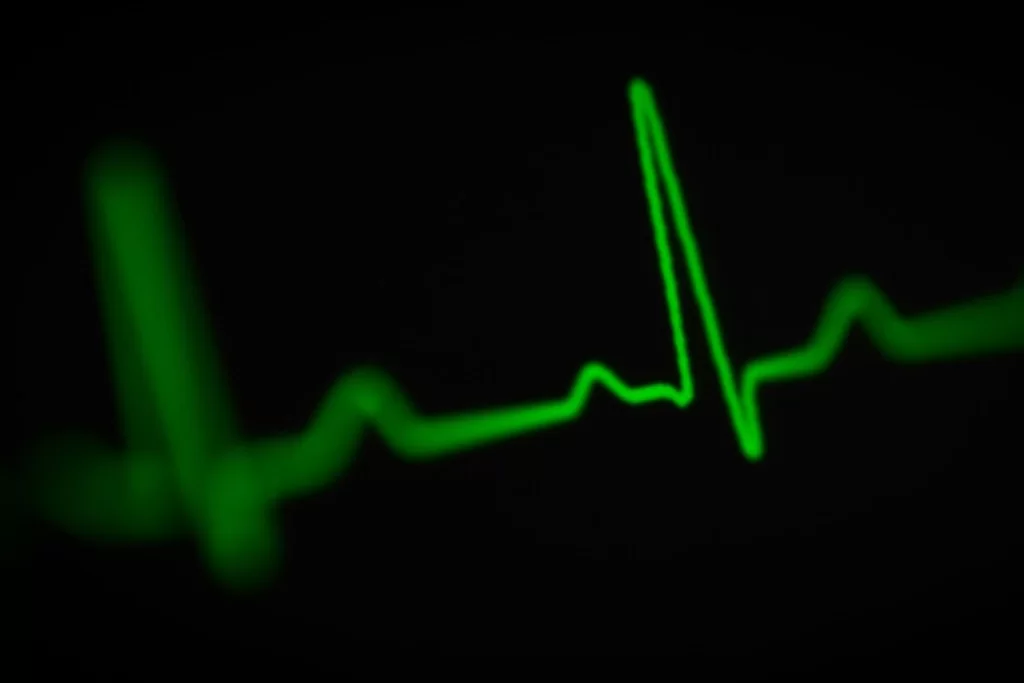
Nothing is more important than the safety of our clients. There are often difficult choices to be faced in determining iboga dosage. Experience has taught us that conservative dosing is a must, even if clients are sometimes disappointed in the lack of a visionary experience. We feel that every death associated with Iboga use has been preventable, and we will do whatever it takes to keep our clients alive and well.
How do we at Iboga Tree Healing House determine ibogaine dosage for our clients? We’ll let Alvaro take it from here:
“There are recommended doses in the GITA literature (www.ibogainealliance.com) which we use as a guideline. We tend to dose women less than men, and clients in poor physical shape less than those who are in good form. However, dosing has a lot to do with factors that go well beyond body weight which tends to be the standard marker for dosing. We look at the individual holistically. We aim to understand their whole physical condition, their medical history, their family medical history, their experience (if any, with entheogens), the substance(s) they consume, and of course their psychological state. Safety being our priority, dosing, although medical in its approach, is intuitive, and only experience can forge this relationship with our dosing regimen."
2) Emergency Planning
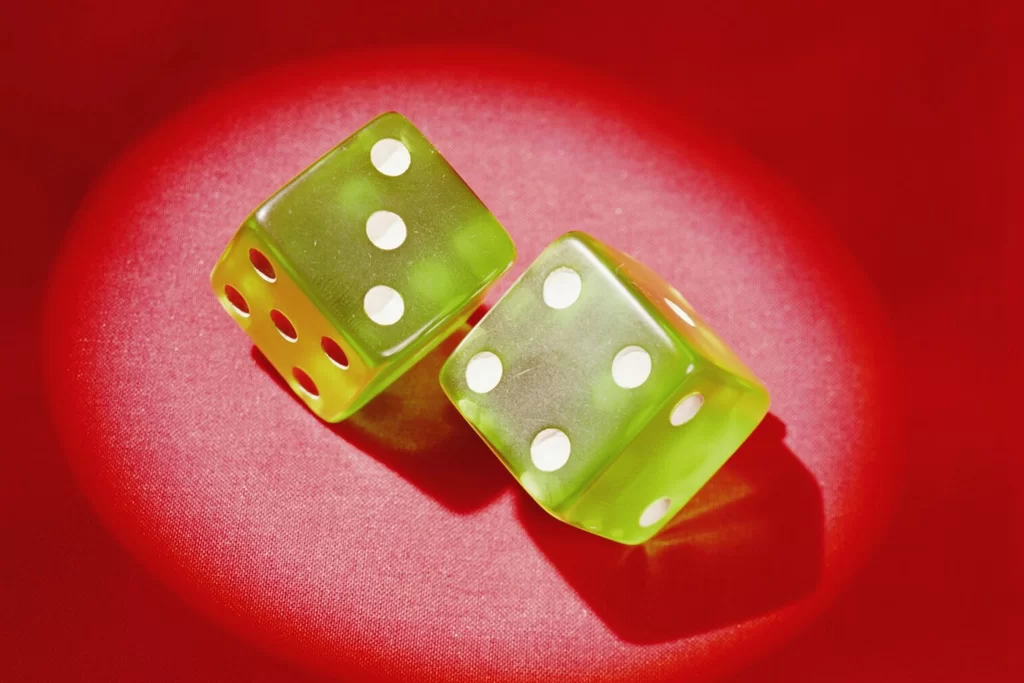
Emergency planning is vital. We at ITHH quickly learned the importance of thoroughly going through our emergency plan before treating every single client. If a cardiac incident occurs, every second is vital, and we need to be ready to jump into action. It doesn’t feel good to call an ambulance, but we’d rather call a million ambulances than a single hearse. The Iboga community is understandably anxious about publicizing adverse health outcomes, but medicalization, regulation, and legitimization should be our goals, and transparency is the best way to achieve them.
Here’s how Alvaro and Iboga Tree Healing House's medical staff have planned for potential emergencies to ensure that we are prepared for any medical eventuality:
“Safety being our primary concern, we take emergency planning very seriously. On treatment day, we undertake an emergency drill as if it were our very first drill. We do this without fail. The on-duty team get together, each person is handed a role, and we act out our emergency plan. Whenever we have had any issues, our emergency plan has kicked in and we have managed to avert disaster. We will never compromise on the importance of our emergency plan. The planning is client-centric and starts well before this drill. By this time, we understand the client fully, and are clear on what issues we may face, and as a result, we prepare accordingly.
In the room, we have a continuous heart monitor, defibrillator, pacer, oxygen, oximeter, blood pressure measuring machine, supporting oral and iv medication (like diazepam), crash cart, and all ACLS medication and supporting items like geddels for non-invasive assisted breathing.
We have safety covered.”
3) Cautious Dosing

Flood dosing does not work for everyone. Some brains and bodies can withstand a heavy dose of iboga (20mg/kg and up) but others can’t. Re-setting the addicted brain doesn’t require a flood dose, and you can experience the benefits of treatment without taking unnecessary risks.
Here’s why we at Iboga Tree Healing House always defer to qualified medical staff when determining iboga dosage, regardless of what clients might request:
“Clients do not determine doses. This is a medical decision. I must stress, that even if a client has had an iboga flood in the past, it doesn’t necessarily mean they will react the same way as their previous time, and they may well not be suitable for a flood the next time around. Again, experience will determine what is best.”
4) Honesty
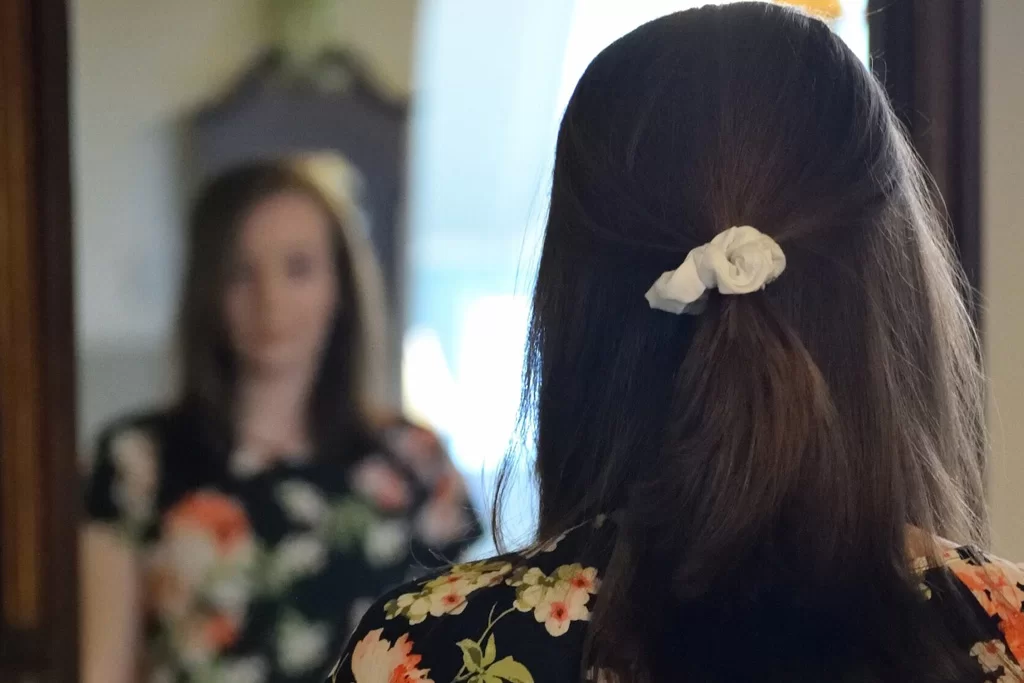
It’s important to be realistic and honest about what Iboga can and can’t do. Like many in the community, we’ve been outspoken advocates for Iboga’s utility in treating addiction. But we’ve learned that it’s essential to let our clients know that Iboga is an addiction interrupter and not a cure. We always emphasize that other tools are necessary to maintain recovery over the long term. We are also aware that the iboga journey is not widely understood, and that misinformation about iboga is all too common. While skepticism is often indeed a healthy reaction to a new idea, it can also hold one back at times. At Iboga Tree Healing House, we’ve learned to provide all the information we can and let our prospective clients make their own decisions about whether our program is right for them.
Here’s how we address fear-based skepticism about iboga treatment:
“Skepticism is often based on fear. Fear of the unknown. We provide tools and information to help clients get over their fears. By the time we have helped the client understand their pending ‘initiation’, skepticism is a faded memory. We have never treated anyone who was a skeptic by the time they entered the doors of Iboga Tree Healing House. We have several testimonials online to vouch for the effectiveness of our program. Iboga is one of many tools we use to help people move forward in their lives, to help them discover the deep-rooted issues that trigger their addictions, and their self-limiting beliefs, and help remove those blockages to open up the door to the ‘good life’.”
5) The Holistic Way
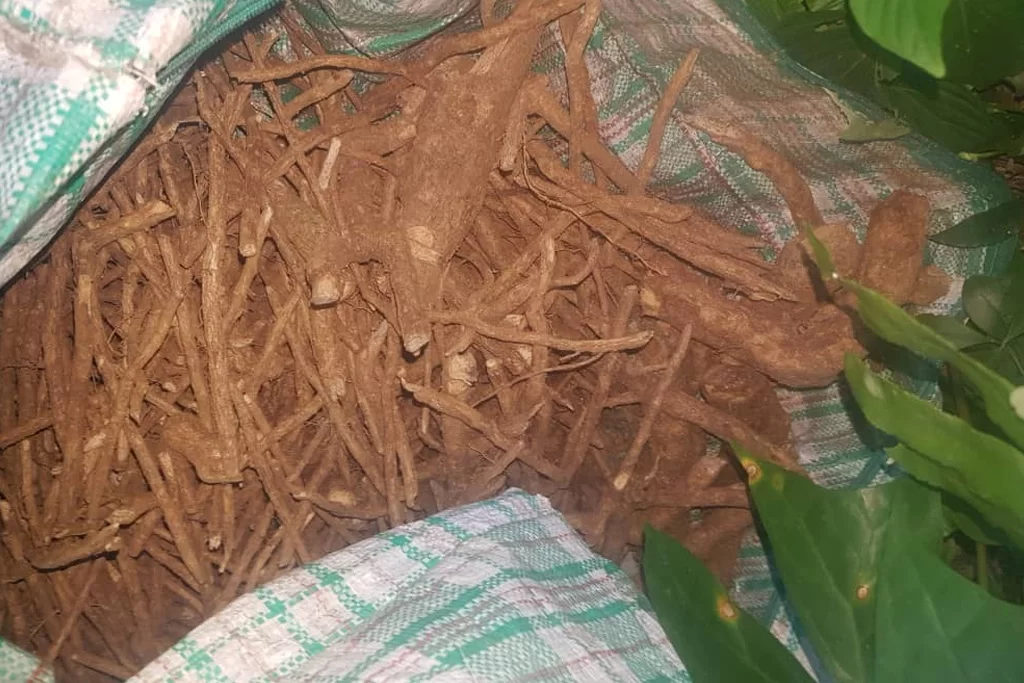
Experience has taught us that we can fight addiction most effectively by combining Iboga treatment with holistic therapies and conventional modalities. We’ve seen firsthand the benefits of talk therapy and peer support, and while we’re enthusiastic proponents of energetic, holistic treatments and Iboga therapy, we feel that combining all three methods is the most effective way to end the cycle of addiction. Taking iboga by itself and shirking the other aspects of a robust, holistic recovery plan will accomplish very little.
Here’s how a holistic program of recovery can help to ensure long-term recovery:
“Often, the lingering memories of a client’s stay at Iboga Tree Healing House revolve around what happened in the therapy room and beyond. Our therapies, even if there may have been resistance at the beginning, are the disciplines clients take home with them, not just as memories, but to implement into their essential daily practice, their lifeline.”
6) Preparation
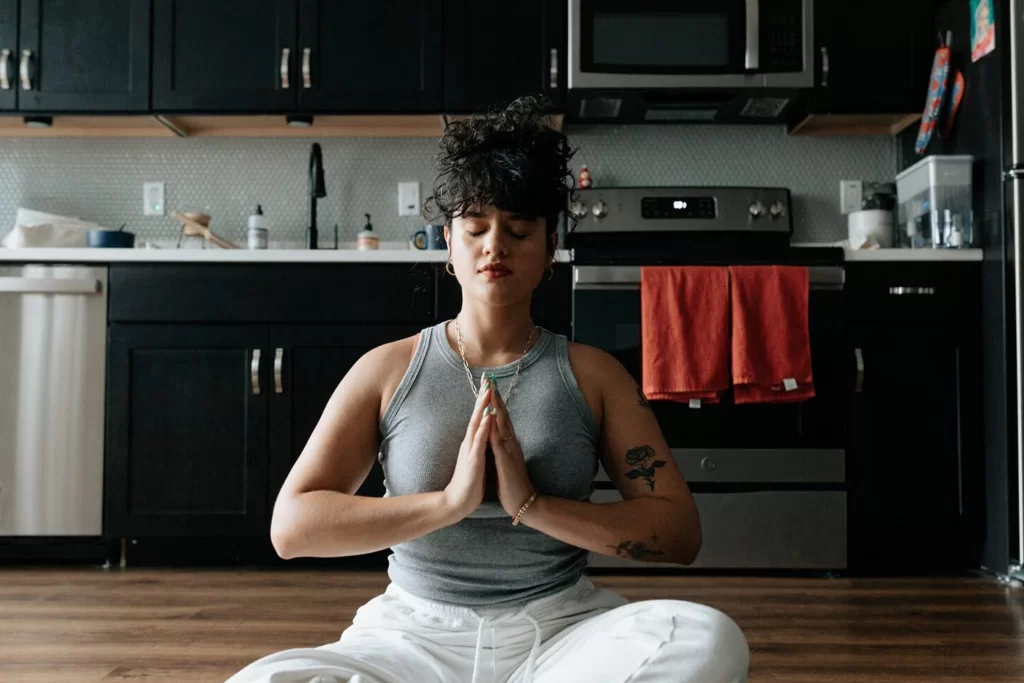
Pre-treatment is an essential building block for success. We’ve learned that postponing treatment when our clients aren’t ready is a necessary step for achieving positive results. We employ a narrative approach to lead our clients away from their addicted selves and portray the iboga experience as a hero’s journey. We feel this helps clients establish and entrench their vision of a substance-free life and gives them their best chance at success.
Here’s why Alvaro believes pre-treatment to be an integral aspect of any successful iboga treatment experience:
“Pre-treatment therapy, although not a mandatory prerequisite to join our program, it is an essential component for the client to get the most out of their Iboga treatment. As we’ve said many times, Iboga is not an instant cure-all but is the most profound catalyst to change. It is unrivaled in its ability to take away withdrawals and create a pre-addicted state brain reset, however, its success is dependent on how one prepares for and integrates the ibogaine experience. Pre-therapy is conducted by our in-house therapy team. We know, those that undertake pre-treatment, are more likely to benefit from the experience.”
7) Aftercare
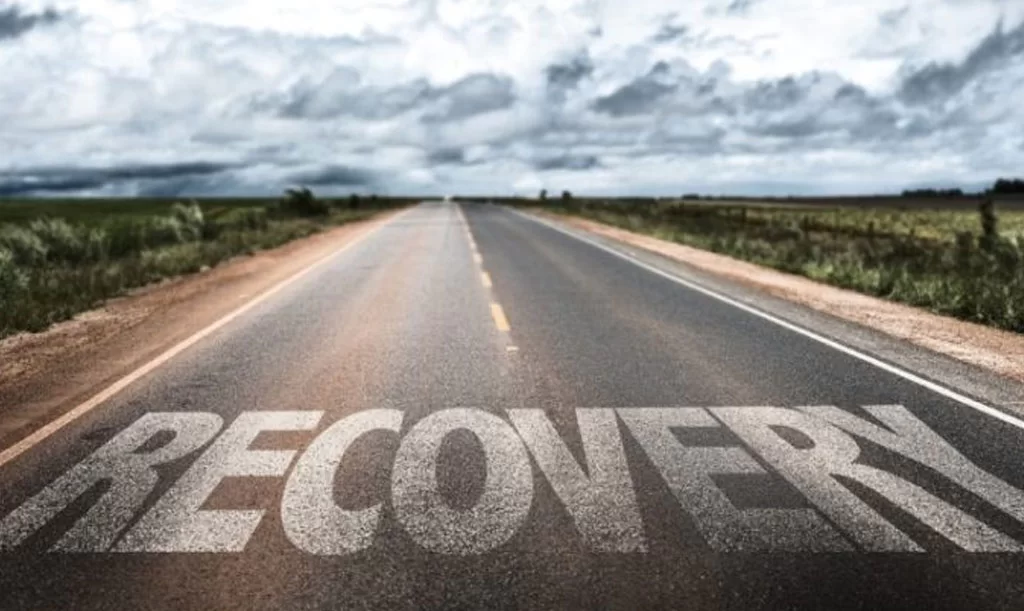
The importance of aftercare for those who’ve completed iboga treatment cannot be overemphasized. One of our favorite parts of conventional addiction treatment is the fellowship and peer support created by 12 Step group meetings and mentorships. We’ve tried to build a similar structure with our own weekly support meetings. Our goal is to build and sustain a self-supporting community of people who have recovered through Iboga.
Here’s how 12-step fellowships can help to keep one’s recovery journey on the right path:
“During their time at Iboga Tree Healing House, clients are informed on what support groups are out there. From 12 Steps to SMART (there are so many these days). We don’t recommend it, we simply inform of what is on offer. Support is support, if it works for you, then great, if it doesn’t, look for another group or organization. We help them research which fellowships are available close to home so they can hit the ground running. Other than this, every client is invited to join the IRM for life. The IRM is our very own online fellowship, the Ibogaine Recovery Movement. And, like all grassroots movements, it is building momentum.”
It’s worth noting, however, that Iboga remains stigmatized in many 12-step circles, something Alvaro hopes will change in the very near future:
“Some of our clients have indeed suffered from skepticism, judgment, and hostility at 12 Step and SMART meetings. Unfortunately, some attendees are rather closed-minded. I’ve found, however, that if you persist, keep showing up, share your story, gradually it all turns to acceptance.
Funnily enough, I got sacked by my one and only NA sponsor for not informing him that I had taken a ‘drug’ to get off drugs. Little did he know, Iboga is not a drug, it’s a medicine. At the time I was full of resentment, but now I understand that education is so important, and slowly slowly, some of the more closed groups will gradually open up. It won’t be long before there is an ‘iboga initiate’ in every meeting! This is why we are exhibiting at the iCCAD conference in London, to educate, to inform, to make some noise!”
Iboga Tree Healing House (Alvaro’s 2 cents) 
“Tabula Rasa Retreat is not just an Ibogaine treatment centre, it is so much more. We have worked tirelessly, from first-hand addiction experiences to in-depth medical research, to speaking to leading experts around the world, to learning on the job, to find that magic formula. We discovered, there is no magic formula! Addiction is a complex disease and requires tackling from multiple angles. As mentioned earlier, Iboga is an important tool in the toolbox of addiction treatment. As we research further and learn more, we will keep adding to that box. Not one client is the same; it makes perfect sense that a bespoke approach is required to help in the best way we can. We never rest on our laurels.”
2nd September 2019
Making Recovery Last: The Importance of Iboga Aftercare
If you’ve been paying attention to the rapidly evolving world of addiction treatment, you’re probably already aware of iboga’s remarkable ability to interrupt the debilitating downward spiral of substance misuse. Iboga has allowed thousands of addicts to effectively treat their withdrawal symptoms. It re-wires neural pathways that have been warped by substance misuse, returning sufferers to a pre-addicted state. But Iboga isn’t a cure-all or a magic bullet. It interrupts addiction and allows people to enter recovery with a blank slate on which to write a brand-new life story. But in order to give that story a happy ending, addicts absolutely must dedicate themselves to iboga aftercare.
Today we’ll be taking a look at some iboga aftercare options that can help your recovery last a lifetime...
Addiction's roots
As we’ve gained a greater understanding of addiction, the idea of the “demon drug” that robs addicts of free will has fallen by the wayside. Addiction is increasingly being viewed as a response to physical and mental pain, and treatment has been evolving to address the psychological roots of the affliction. Influential thinkers like Dr. Gabor Mate and Johann Hari have inspired many to explore the traumas that allow addiction to develop and to treat the ailment with understanding and compassion. As our understanding of addiction has increased, we’ve come to realize that it isn’t an affliction that can be treated uniformly. Every recovering addict must deal with their pain and their triggers in the manner that works best for them. Finding aftercare solutions that offer you the tools you need to address, cope with, and move forward from trauma and pain is an essential step in the recovery process.
Mindfulness and Meditation
Mindfulness and meditation are two tools that we would unreservedly recommend to those in recovery. Mindfulness therapy can allow you to avoid negative and self-destructive mind-frames, and allow you to deal with cravings and emotions in a positive way. Mindfulness and meditation and Kundalini yoga have been proven to reduce levels of cortisol, a stress-related hormone, and other toxins in the body. Addiction allows those in pain to numb themselves, and a fundamental part of the recovery process is learning to live with your pain. Mindfulness therapy is an incredibly powerful tool for learning to live with and love yourself!
The CBT Difference
Like mindfulness, Cognitive Behavioral Therapy (CBT), is an effective way to explore and learn to cope with the problems at the root of addiction. Most addicts begin their downward spiral when a substance offers them powerful positive (“this drug makes me feel great”) or negative (“I need to eliminate this stress/pain”) stimuli. Over time they program themselves to unconsciously respond to feelings or situations with “automatic thoughts” or “triggers”: a certain stimulus causes an automatic desire to use a substance to bring pleasure or eliminate pain.
CBT teaches patients to identify and avoid triggers and replace unhealthy behaviors with beneficial ones. It also seeks to change belief systems and alter unhealthy and negative automatic thoughts that spur addiction. Like mindfulness, CBT promotes attention to the self and self-regulation of emotions, two mental tools that can help those in recovery recognize and deal with negative patterns of thought and behavior.
Making Connections
We’ve already written about Johann Hari and the social connection theory of addiction, as well as Dr. Bruce Alexander’s influential Rat Park study. Both are somewhat controversial, but every addiction professional will agree that connecting with others in recovery is an essential piece of the aftercare puzzle. As the SAMHSA fact sheet notes, “research indicates that active participation in any type of peer support group increases the likelihood that members will abstain from alcohol and nonprescription drugs. Furthermore, abstinence rates increase with greater group participation.” The Surgeon General has also found that “controlled studies have demonstrated benefits for consumers participating in self-help" and that "participation in self-help groups has been found to lessen feelings of isolation, increase practical knowledge, and sustain coping efforts."
There are a number of peer support organizations out there, ranging from traditional 12 Step groups to Double Trouble in Recovery for addicts suffering from co-occurring disorders, to SMART Recovery (an alternative to 12 step programs that focus on teaching the skills necessary for building a balanced life). At Iboga Tree Healing House we offer a weekly online aftercare session, which allows up to 8 former clients to meet once a week and share their experiences, trials, and triumphs. Being close to those who have shared your Iboga experience can offer the support and encouragement that everyone on this journey will need.
HALT!
Relapse is always a danger for those in recovery, no matter how careful or committed they are. In fact, many experts would argue that addiction is an affliction that lasts a lifetime and can never be “cured.” Self-care and self-awareness are a must for successful relapse prevention, and one of the simplest tools for ensuring you aren’t vulnerable to triggers is the HALT principle. HALT (asking yourself if you’re hungry, angry, lonely, or tired) allows you to recognize and deal with problematic emotions that can lead to relapse before they create significant harm. Focusing on nutrition, dealing with emotions constructively, avoiding isolation, and recharging your body and mind will allow you to deal with everyday stresses in a positive fashion and build a healthy and rewarding life for yourself.
The holistic aftercare options we offer at Iboga Tree Healing House, ranging from equine-assisted therapy to Kundalini Yoga and massage, are intended to foster the ability to deal with problematic thoughts and emotions in a positive way. Arming yourself with strategies and techniques for combating cravings and dealing with difficult situations should be a key component in your aftercare plan.
Iboga Aftercare: Staying On The Path
It’s a mistake to think of iboga therapy as a cure for what ails you. Maintaining your sobriety requires careful preparation and a lifetime’s worth of effort. But trust us, emerging from addiction as a healthy, positive, and well-adjusted individual is worth the time and effort. At Iboga Tree Healing House we work with all of our clients to create a personalized ibogaine aftercare plan that will help you to deal with the challenges that lie ahead. If you’re ready to change your life for the better, don’t hesitate to get in touch!
29th August 2019
The State of the Opioid Crisis in 2019
The opioid crisis has continued to run unabated, despite the efforts of lawmakers, treatment providers, and healthcare professionals. Americans are now more likely to die from an overdose than a car crash. And as this recent article in US News and World Report states, the opioid epidemic has become America’s “deadly new normal” with no end in sight for the current, historically high rates of addiction, overdoses, and deaths. Let’s take a look at where we stand with the opioid crisis, and how we are moving forward.
Are new regulations having an impact?

Many analysts would trace the growth of the opioid crisis to Purdue Pharma’s aggressive marketing of OxyContin as a painkiller. The drug was made for patients suffering from moderate to severe pain, but a sales force that irresponsibly downplayed the substance’s potential for abuse led many health professionals to over-prescribe the drug. As detailed in this article in the American Journal of Public Health, Purdue Pharma’s sales force was armed with research that dramatically downplayed the risk of addiction, and convinced doctors and dentists that OxyContin was an effective, low-risk option for pain management.
US News and World Report notes that a decade after the introduction of OxyContin, regulators had yet to take the spread of opioid addiction seriously. A 2011 report from The Institute of Medicine on pain relief was longer than 350 pages, yet only mentioned addiction a few times. As FDA Commissioner Dr. Scott Gottlieb has stated: “The old notion was that if you were using opioids for a legitimate purpose, you couldn’t become addicted. We now know that’s not true.”
Meanwhile, pharmaceutical companies were making massive profits by flooding small towns with millions of addictive pills. This scathing report from an American Congressional Committee, which found that distributors and the DEA “failed to abate [the] US opioid crisis,” details how pharmaceutical giant McKesson shipped 9650 hydrocodone pills per day to a pharmacy in Kermit, West Virginia, a town with a population of just 400! These shipments were 36 times above the companies own monthly dosage threshold.
The American DEA is still attempting to work out a “centralized way to analyze suspicious order reports”, but earlier this year they approved a rule change that requires drug producers to identify a legitimate need for opioids to justify their rates of production. This new regulation is an attempt to limit the supply of pills, but it’s too early to judge its effectiveness
Meanwhile, pharmaceutical companies are facing lawsuits from various levels of government across America for failing to detect and report suspicious orders of pain pills. McKesson has already paid $150 million to settle a federal complaint about negligence, and they have agreed to a multi-year suspension from sales of controlled substances in four states. Sixteen states and hundreds of cities and counties are currently suing pharmaceutical companies for the negligence and aggressive, misleading marketing campaigns that brought the crisis to its current, deadly state. As Mississippi Attorney General Mike Moore states “Should taxpayers pay to clean up the mess caused by multi-billion dollar companies who lied to sell their products, or should the companies who profited pay?”
Mounting Tragedies
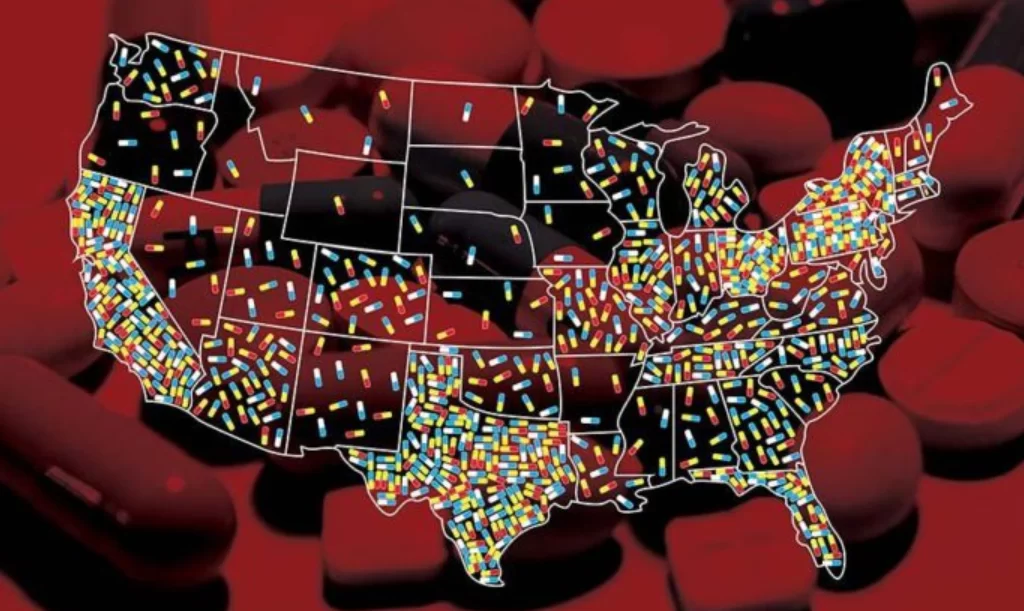
While it’s certainly a positive development that governments are taking legislative and legal action to fight the spread of addiction, it will be a while before these actions have their effect. In the meantime, those already afflicted are in increasingly dire straits. As the supply of legal pills dries up, more and more users will turn to counterfeit prescription opioids, pills that are often laced with, or made entirely from, fentanyl. The Partnership for Safe Medicines has found counterfeit pills containing fentanyl in 44 of the 50 US states, and deaths attributed to those pills have occurred in at least 26 states. In 2017 over 275 million packages flowed through the American government’s international mail facilities, and authorities estimate that 9% of them contained drugs of some kind. In a report on the situation, the FDA noted that currently only 10,000 packages are inspected each year.
Even if governments can dramatically reduce the legal supply of opioids, the opioid crisis could worsen. It’s estimated that over $800 million dollars worth of fentanyl has been shipped from China to the US in the past few years, and this is bad news for any opioid addict or anyone who cares about one. Fentanyl is 30-50 times stronger than heroin and can be lethal in doses of just 2 milligrams. As a US Attorney in Ohio has noted: “One of the truly terrifying things is the pills are pressed and dyed to look like oxycodone. If you are using oxycodone and take fentanyl not knowing it is fentanyl, that is an overdose waiting to happen. Each of those pills is a potential overdose death.”
Here's The Good News
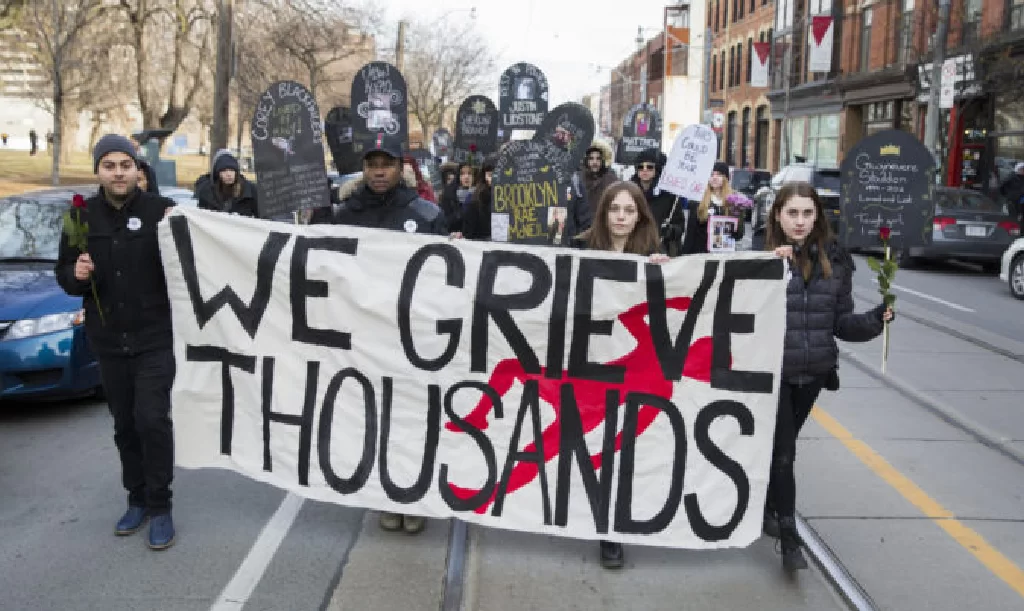
It is a positive step forward that governments, the courts, and even pharmaceutical companies are finally taking action to contain the current opioid crisis. Furthermore, Chinese Leader Xi Jinping recently pledged to declare fentanyl a controlled substance and clamp down on its production and sale. But for those already facing the nightmare of opioid addiction, that is cold comfort. The only way to stay safe is to seek treatment and build a healthy, sober life without the painkillers that are causing 130 Americans to die every single day.
And on this front, there is good news. Exciting new treatments such as iboga, suboxone, and ayahuasca are helping many addicts with the withdrawals and cravings that make getting sober so difficult. Iboga has proven to be particularly effective in treating short-action opioid withdrawals, including commonly abused substances such as codeine and oxycodone. Because these drugs leave the system quickly, the treatment can be administered during the early stages of withdrawal, where it minimizes the horrific symptoms associated with quitting “cold turkey.” Ibogaine also resets dopamine receptors in the brain to a pre-addicted state, normalizing the addicts’ ability to experience pleasure and significantly lowering their tolerance for opioids.
Addictions thought leader Dr. Gabor Maté believes that “A hurt is at the centre of all addictive behaviours. It is present in the gambler, the Internet addict, the compulsive shopper and the workaholic. The wound may not be as deep and the ache not as excruciating, and it may even be entirely hidden—but it’s there.” Addictions experts across the globe are gaining an ever greater understanding of the roots of addiction, a dis-ease which often begins as a response to mental and physical pain. Millions turned to opioids in response to chronic physical and emotional pain. But the relief that they offered was temporary, and the horrifying toll they have taken on our societies has been huge. If you’re ready to end the nightmare of opioid addiction, don’t hesitate to get in touch!
26th August 2019
Executive Burnout: 5 Signs To Watch For
When we think of executives, we generally picture an idealized life. A corner office, a golf course, a power suit, maybe even a private jet. But managing people comes with a unique set of challenges and stresses which can seem unending. As a manager, you’re constantly dealing with incompetent, unhappy and negative workers and trying to form them into a working team. You must define goals and determine how best to achieve them in less than ideal circumstances. As the Harvard Business Review has noted, managing people is “the most difficult administrative task, and it has built-in frustration. That frustration can -and does- cause many managers to burn out.”
Worse still, executive burnout can often lead to even bigger problems, like substance use disorders. SAMHSA has noted that of the “ individuals employed in the management sector (e.g., business executives and other managers), 11.4 percent had a diagnosis of a substance use disorder within the year prior to the survey. This was the sixth-highest rate of all the occupations surveyed.” A demanding job which can cause a severe disconnect from the people close to an individual takes a severe toll on the psychological well-being of many executives.
Let’s take a look at 5 signs of executive burnout, and ways to deal with them.
1) Irritability, Cynicism, and Negativity
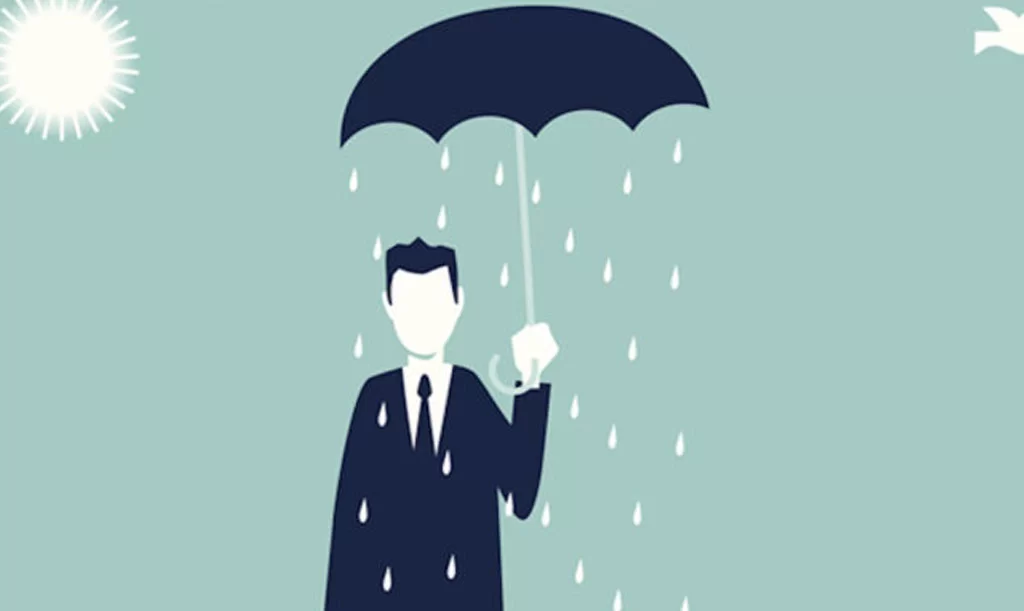
Many people who have suffered executive burnout note that the demands of dealing with constant reorganization can create a deep sense of dissatisfaction with their companies. Work lives are disrupted for seemingly arbitrary and political reasons, and promotion and reward can seem to be based on factors other than merit. Meanwhile, you’re dealing with the complaints of suspicious, competitive, and entitled subordinates. These factors often lead managers to question the value of their work and the paths their companies have chosen. As the Harvard Business Review notes, “a special phenomenon occurs after people expend a great deal of effort, intense to the point of exhaustion, without visible results. People in these situations feel angry, helpless, trapped, and depleted.”
2) Isolation

This symptom manifests itself in the work and home lives of those suffering from burnout. At work, it can be a tendency to close your door or find an excuse not to go out for lunch with colleagues. As burnout becomes more severe, sufferers may begin coming in early and leaving late to avoid interacting with others, or they might become angry whenever they’re spoken to by a colleague. The demands of constantly working with others in stressful situations can cause managers to feel besieged, and drain social situations of a sense of pleasure and companionship. At home, irritability with demands on time and emotions from your family is common and pushes vital sources of support away from those who need them. Burnout often leads to interpersonal tension within families, and hair-trigger emotional responses associated with the condition can drive family members away.
3) Exhaustion and Insomnia

Trouble sleeping is commonly associated with burnout. It often begins with difficulty falling asleep one or two nights a week or disturbed sleep in times of stress. Trouble sleeping is often associated with persistent thoughts of seemingly insurmountable problems and intractable situations at work. In the later stages of burnout, insomnia is often a nightly ordeal.
With or without insomnia, the feeling of exhaustion is a tell-tale sign of burnout. According to Psychology Today, for those suffering from burnout, “fatigue becomes a physical and psychological state of exhaustion. You feel drained. Everything takes a concerted effort. You have no energy, so you do as little as possible to make it through the day. You find it difficult to get out of bed and may even call in sick on the days you feel like you simply can't get out of bed.” Exhaustion and burnout go hand in hand: the World Health Organization characterizes the disorder as “a state of vital exhaustion.”
4) Immune System Issues
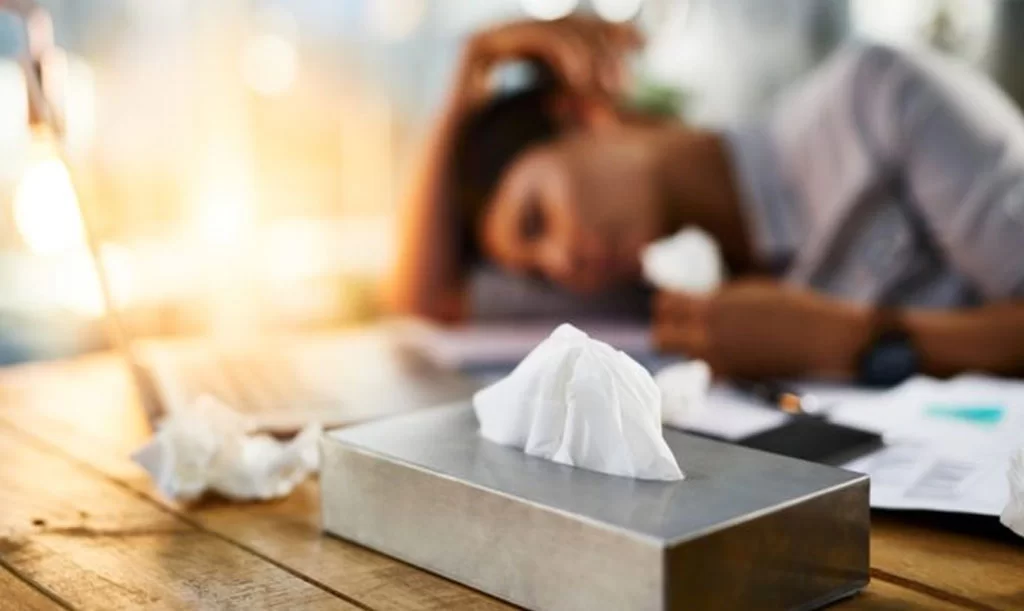
Because the body is exhausted and depleted by burnout, sufferers often experience illness more frequently, and their symptoms tend to linger. Studies have shown that people experiencing burnout are more likely to experience upper respiratory illnesses, stomach and bowel problems, and headaches. And if left unchecked it can lead to life-threatening illnesses. A study at Tel Aviv University found that the syndrome can increase the risk of coronary heart disease by up to 79%, and also increases the risk of stroke.
5) Anxiety and Depression
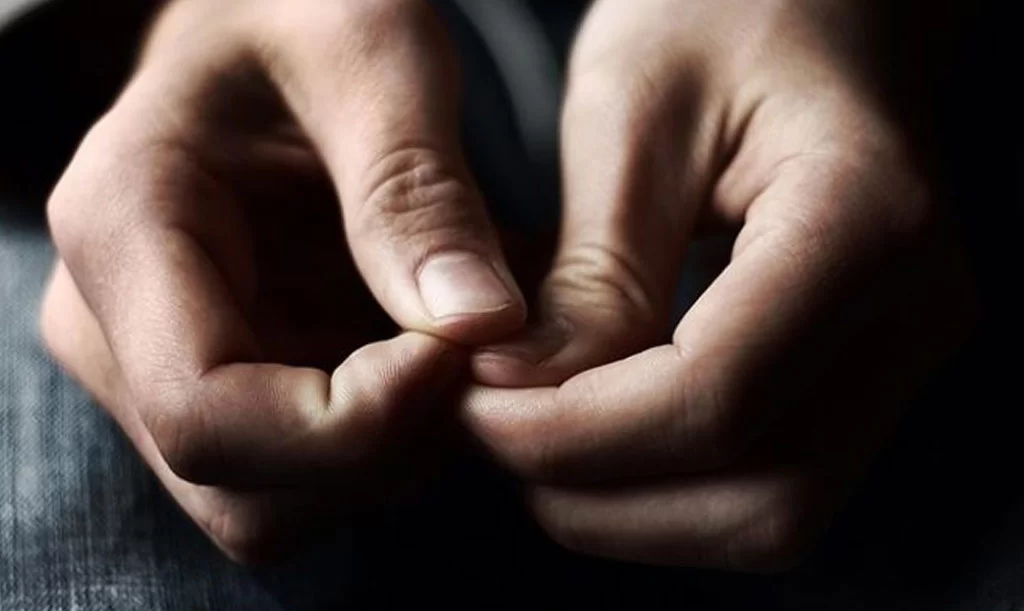
In its early stages burnout commonly causes intermittent bouts of tension, worry, sadness, and hopelessness. At its worst, it leaves sufferers feeling trapped, panicked, and even suicidal. Many executives dealing with burnout have reported panic attacks, and anxiety so severe that they began calling in sick to work.
Meanwhile, recent research suggests that depression and burnout seem to be inextricably linked. American researchers studying 5575 participants who identified as burnt out met “criteria for a provisional diagnosis of depression.” The same study also observed that “burnout and depressive symptoms have been found to be inseparably linked, increasing or declining together over time.”
Healing Burnout

One idea for dealing with burnout is to contemplate a career change. Clinical psychologist Rachel Andrew understands burnout as a response to intolerable pressure and stress: “In the people I have met, it can be quite functional – the only way your mind and body have left to keep you safe, of protecting you when there are no other options available. But it’s not a decision that you make; it happens unconsciously.”
Of course, a career change isn’t an option for everyone. Another way to prevent burnout is to change management structures, and promote collaboration and shared responsibilities. Companies that offer their employees a sense of purpose and belonging are far less likely to create burnt out managers, according to experts. The new movement Minds At Work is working to educate employers on their responsibility to care for the mental well-being of employees. But we are probably years away from corporate cultures that don’t foster stress and competitiveness.
If you don’t have the option of packing it in and opening an antique shop in a picturesque village, alternative psychological treatments can be a life-saving option. Studies have shown that psychedelics and oneirogenics, such as Iboga, can profoundly help severely depressed groups who don’t respond to traditional treatments. They also foster a sense of connectedness with others that can free sufferers from the debilitating sense of isolation that goes hand in hand with executive burnout. The treatment has helped many individuals suffering from dual-diagnosis related disorders, and the sense of spiritual well-being it can awaken is an ideal option for those dealing with executive burnout. If you feel that this is what you need, don’t hesitate to contact us at Iboga Tree Healing House!
20th August 2019 • Sticky Post
Escaping the Chemsex Cycle
The term “chemsex” jumped into the popular consciousness in 2015 as a feature-length documentary of the same name was released and the British Medical Journal published an editorial warning of the dangers of the phenomenon. According to the BMJ, chemsex is a behaviour defined by the ingestion of GHB, GBL, crystal meth, and mephedrone coupled with participation in hours or days-long sexual sessions with multiple partners. Mephedrone and crystal meth act as stimulants which trigger euphoria and arousal, while GHB and GBL have dis-inhibiting and anesthetic qualities that allow users to take pleasure in risky behaviour they might not attempt sober. Psychologists feel that chemsex appeals mainly to men who suffer from internalised homophobia, anxiety about their HIV status, and a lack of self-confidence and self-esteem. Let’s take a look at the growth of this dangerous trend, and ways for chemsex addicts to break free.
Is Chemsex Common?
As a recent article in Avert notes, while there is a great deal of qualitative data about the phenomenon, it’s difficult to find quantitative data. However, researchers from Public Health London, the University College of London, and Imperial College London found that 30% of HIV positive men who participated in the Positive Voices survey reported having participated in chemsex in the past year (with over 10% reporting they’d participated in “Slamsex”, a particularly dangerous variant where users inject the drugs). While the spread of HIV has finally started to slow, chemsex participants were found more likely to have anal sex without a condom and to engage in the behaviour with partners of an unknown HIV status.
In addition to the risk of increasing the spread of HIV, chemsex is also believed to be a factor in the spread of other STIs. Chemsex participants were found to be more likely to be infected with Hepatitis C, Syphilis, gonorrhea and other STIs which have been spreading rapidly across Europe and North America.
Why Is Chemsex So Addictive?
David Stuart, a sexual health worker at 56 Dean Street, a pioneering London clinic which offers resources and support to chemsex addicts, cites the traumas of growing up as an LGBTQ+ person as a factor. “Intimacy is a skill we learn as children in the ideal family unit…A lot of gay men didn’t experience that” he says. “Then suddenly they’re all grown up, in a hypersexualised gay world with an app on their phone that helps facilitate very fast sex in a population of people who are more prone to HIV and hepatitis C, and they’re trying to incorporate intimacy into their lives with no frame of reference.” Stuart feels that the drugs commonly used in chemsex offer vulnerable gay men a tool which allows them to experience the pleasures of intimacy and sex. However, it also leads to incredibly risky behavior, with a very serious risk of infection and overdose.
Irish healthcare professionals are starting to notice a marked rise in GHB addiction as a result of chemsex. Graham Ryall, a Dublin based outreach worker notes that people who begin using GHB on weekends often experience “terrible comedowns” and begin using throughout the week. “If you’re riddled with anxiety you might think, ‘One shot and I’ll be fine’, but then you need another one at 11am,” Ryall said. And GHB overdoses linked to chemsex have been on the rise in London, with associated deaths doubling in number between 2012 and 2015.
Escaping the Cycle
The documentary film Chemsex follows a young gay man named Miguel through his journey into and out of a blur of hookups and drug abuse. According to him “They filmed me on various comedowns, meltdowns and on one very losing-the-plot crystal meth binge. I think this documentary is a huge step in reaching out to the general public and showing that we’re not hopeless junkies who will die in their own various bodily fluids.” The documentary climaxes with Miguel suffering a psychotic break caused by crystal meth abuse, but following the filming, he went through a year of drug treatment in France. He has yet to watch the movie, stating that “Watching this film at this point in my life will make me sink back into the worst period of my life, a series of rock bottoms. The documentary will always be there tomorrow.”
While difficulty with positive expressions of intimacy and sexuality can lead vulnerable young people into the nightmare of chemsex, other risk factors include depression, anxiety, and drug use outside of sex. While clinics like 56 Dean Street offer a variety of harm reduction services, including clean needles, information, counselling, and the HIV prevention drug PrEP, ending drug dependence is a must for beginning a healthy life.
Drug rehabilitation centers such as Iboga Tree Healing House can be extremely helpful, because of the unique combination of holistic treatments, which help to rebuild the self, and the power of iboga to induce self-reflection and limit withdrawal symptoms and drug cravings. Equine-assisted therapy has helped thousands of people with intimacy issues to build trust and connection, and mindfulness and meditation practices have been shown to benefit those suffering from depression and anxiety.
An addiction to chemsex is fundamentally different from other forms of drug addiction, and traditional treatment models may not address the traumas and mental health issues which lead to this incredibly risky behavior. If you’re interested in breaking free, get in touch with us today!


